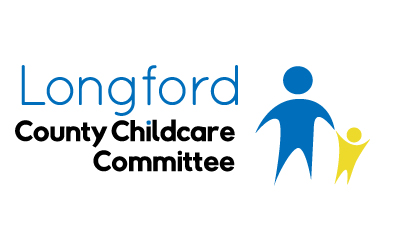From Department of Education; Department of Children, Equality, Disability, Integration and Youth
Published on 5 December 2024
Last updated on 5 December 2024
Minister for Education Norma Foley, and Minister for Children, Equality, Disability, Integration and Youth, Roderic O’Gorman have today welcomed the publication of Aistear, the updated curriculum framework for babies, toddlers and young children.
Aistear, the Irish word for journey, was Ireland’s first curriculum framework for early childhood education when it was introduced in 2009. This is the first update since then and it will come into effect in September next year.
The updated Aistear is for all children from birth to six years in all settings other than primary and special schools. It can be used by anyone who supports babies, toddlers and young children’s learning and development such as parents, childminders and early years educators.
One of the key changes in the updated Aistear is that words, phrases and proverbs “as Gaeilge” are embedded throughout to promote their use by educators as they interact with babies, toddlers and young children every day.
Greater emphasis has also been placed on experiences that support children’s creativity and their engagement with the arts, emergent literacy and numeracy, and science, technology, engineering and mathematics (STEM) education. For example, babies, toddlers and young children will be supported to be creative and take the initiative to explore, respond to and express themselves through art, drama, dance or music.
Minister Foley said:
“Nurturing young children’s interest and love for learning is vitally important for their wellbeing, development and for their lifelong learning experiences.
“Babies, toddlers and young children learn and develop at a pace that exceeds that of any other stage in their lives, so it is very important to update the Aistear curriculum to reflect their changing needs.
“I warmly welcome the emphasis in the updated Aistear on promoting the use of Gaeilge in the everyday language of educators as they interact with babies, toddlers and young children.
“I also welcome the continued recognition of the crucial role of súgradh (play), spraoi (fun), taiscéalaíocht (exploration) and comhrá (conversation) in the updated Aistear, as well as the greater emphasis on childrens’ arts, early-stage literacy and numeracy, and science, technology, engineering, and mathematics (STEM) education.
“An innovative part of the updating process was the consultation carried out by the NCCA with babies, toddlers and young children to give them a voice in the process. We know that around 96 per cent of children experience preschool as part of the universal Early Childhood Care and Education (ECCE) programme, so this update will have a broad impact.
“I thank the Minister for Children, Equality, Disability, Integration and Youth and his Department for the collaborative engagement with my Department and the NCCA in this important development. I look forward to continued work across both Departments in supporting the early learning and care sector with its ongoing implementation.”
Minister O’Gorman said:
“The timely publication of the updated Aistear: the Early Childhood Curriculum Framework is an important milestone for the early learning and care sector. The updated Framework reflects the societal and policy changes that have taken place since the publication of the original Framework in 2009. I want to acknowledge the commitment by educators and childminders in implementing Aistear to date; they play a significant role in promoting high quality early learning experiences for young children in different learning environments.
“Mirroring the development of the original framework, a collaborative process has ensured the updated framework is in line with commitments in First 5, the Whole of Government Strategy for Babies, Young Children and their Families 2019-2028, and that Aistear will continue to reflect and support the lives of children and their families for many years to come.
“I am also very pleased that the framework strengthens the focus on children’s rights, slow, relational pedagogy, diversity and inclusion, outdoor learning, wellbeing, and sustainability. The inclusion of words, phrases and proverbs as Gaeilge through the framework acknowledges that our language, identity and belonging are closely intertwined.
“Collaboration between the Department of Children, Equality, Disability, Integration and Youth and the Department of Education will continue over the course of the next year until the commencement of the updated Aistear in September 2025. The focus of the next 12 months will be on dissemination and professional development activities for the sector. The Departments will be working closely with Better Start and the City/County Childcare Committees to ensure early years educators and other stakeholders are ready to implement the new curriculum framework.”
The new Aistear framework promotes a view of babies, toddlers, and young children as capable and confident learners who thrive in caring and respectful relationships. It provides information for adults to help them to provide enjoyable and challenging learning experiences, so that all children can grow and develop.
The framework celebrates early childhood as a time of enjoying and learning from early experiences, laying important foundations for later learning and for life.
Since Aistear was first published in 2009, much has changed both in the early learning and care sector and in society more broadly. An update of the framework was undertaken by the National Council of Curriculum and Assessment (NCCA) to reflect these changes and to ensure that the framework continues to support high quality early learning experiences for children. Mirroring the development of the original framework, the update was done in close collaboration with the early learning and care sector, including educators and organisations supporting their work. It included a review of research and an extensive public consultation in 2022 and 2023.
The updated framework is accompanied by The Guidance for Good Practice. This second document supports educators to understand and engage with the vision, principles and themes in Aistear. Like the 2009 Guidelines for Good Practice, the Guidance describes good practice and expands on important ideas in the curriculum framework.
The framework and related resources can be found here .

